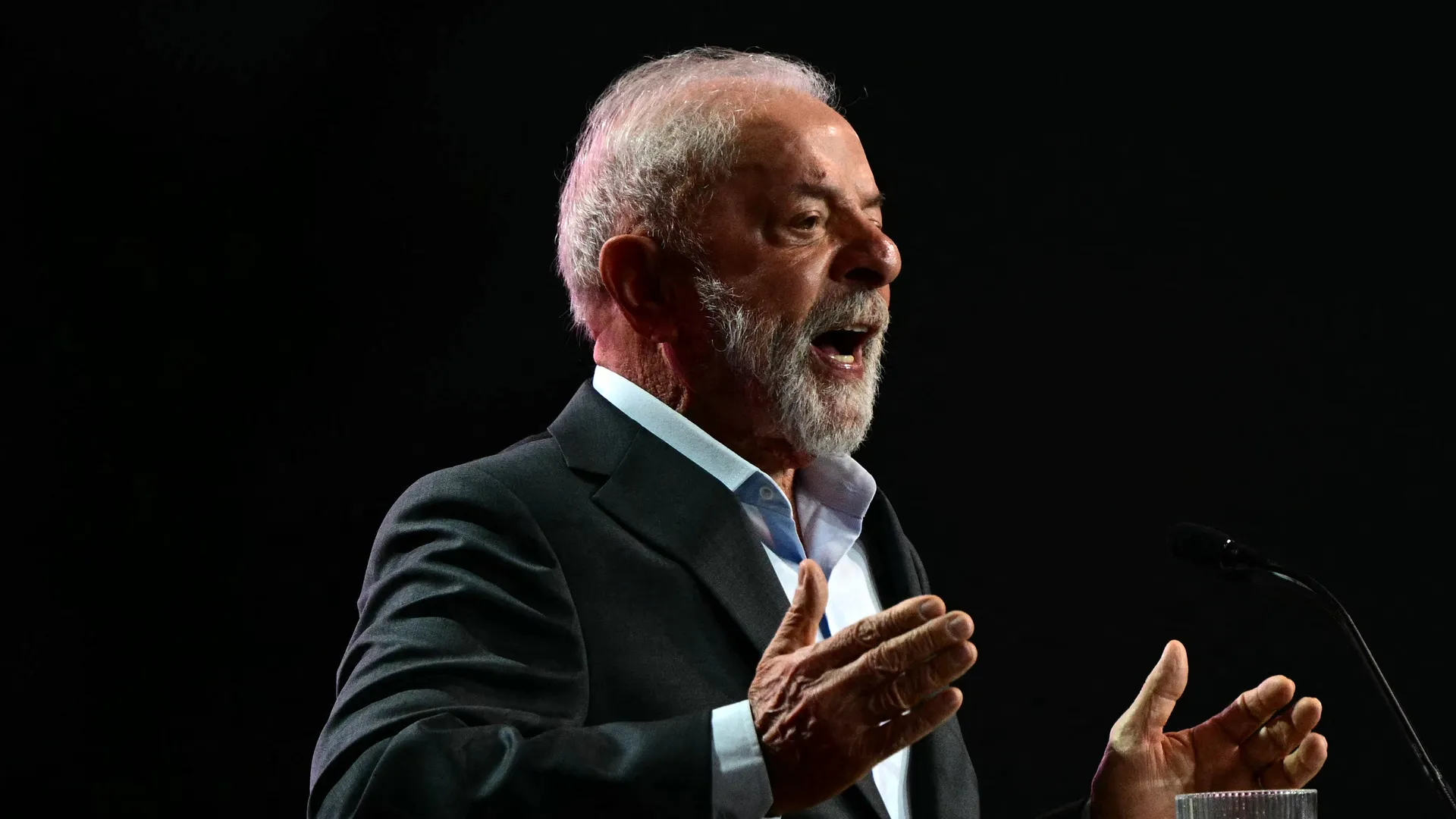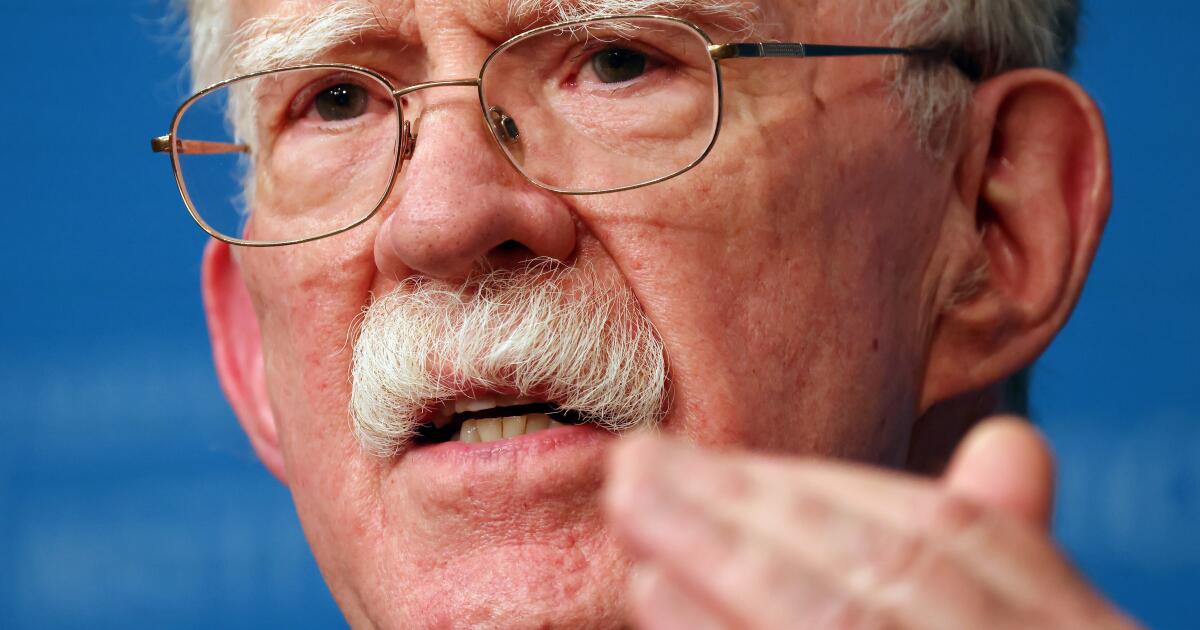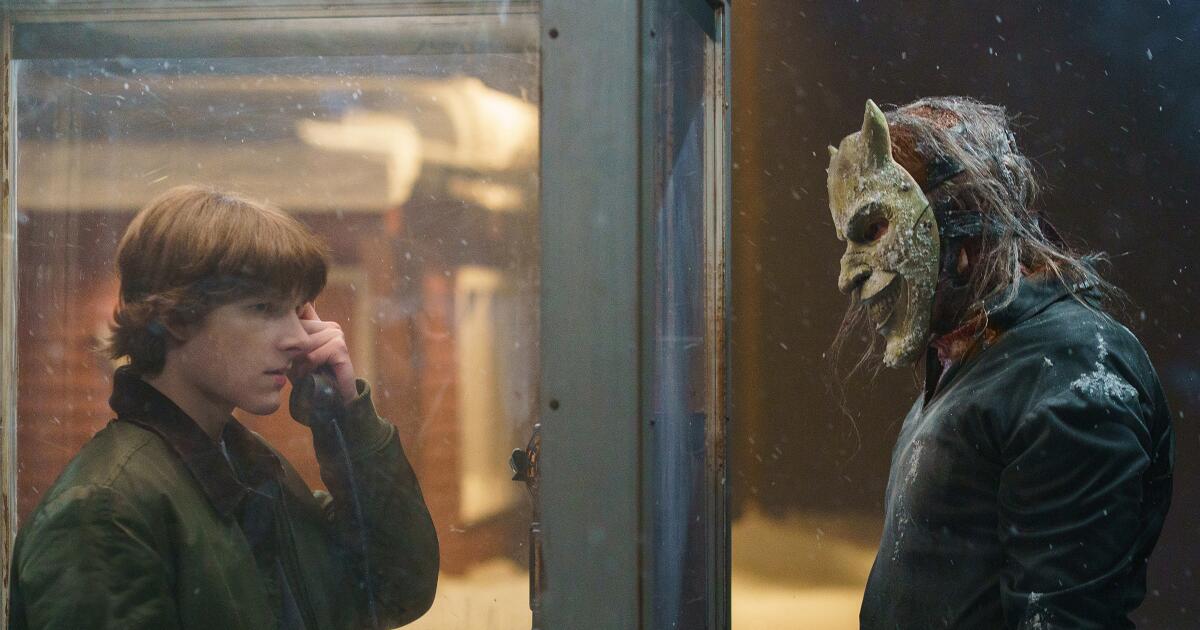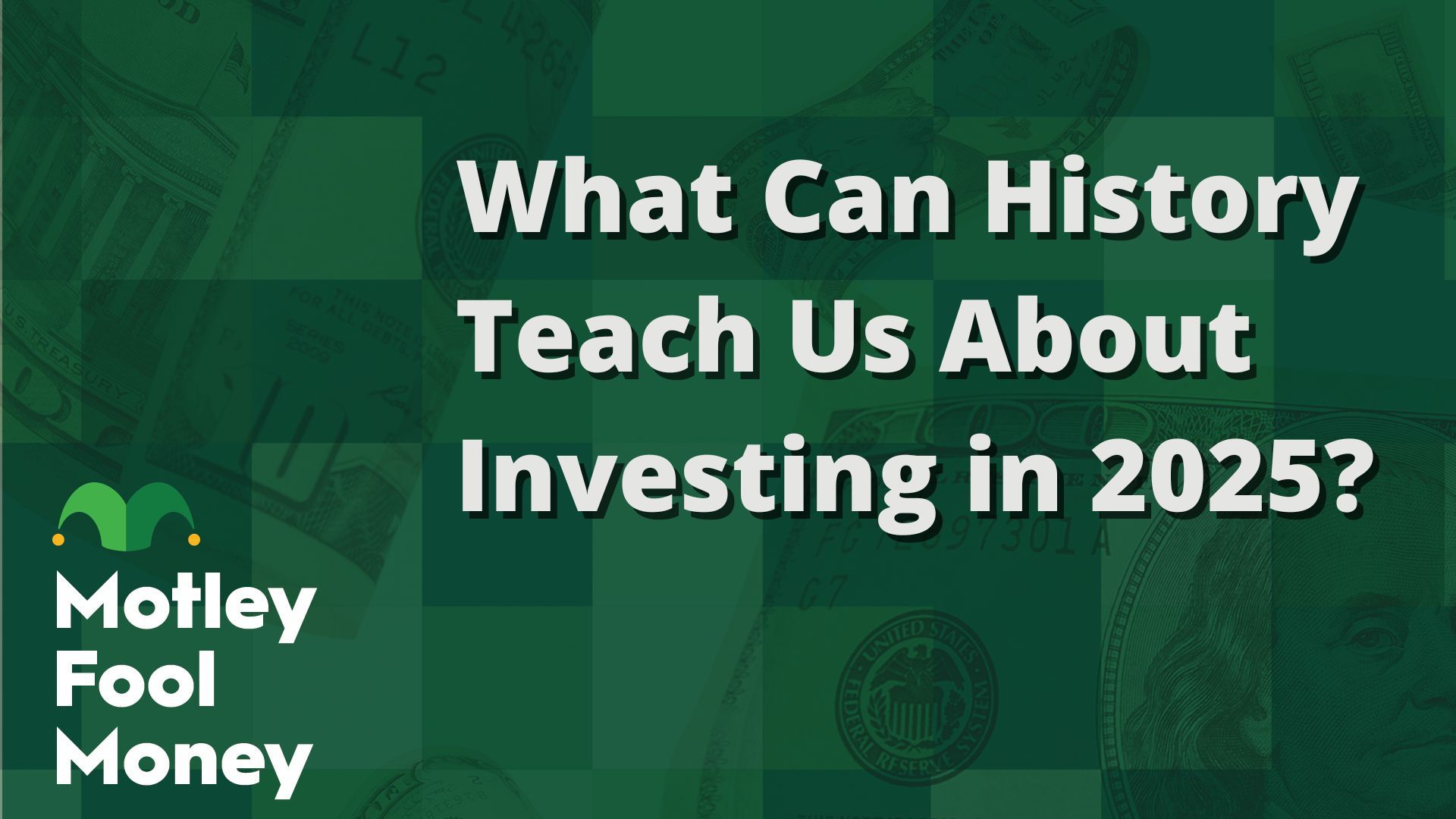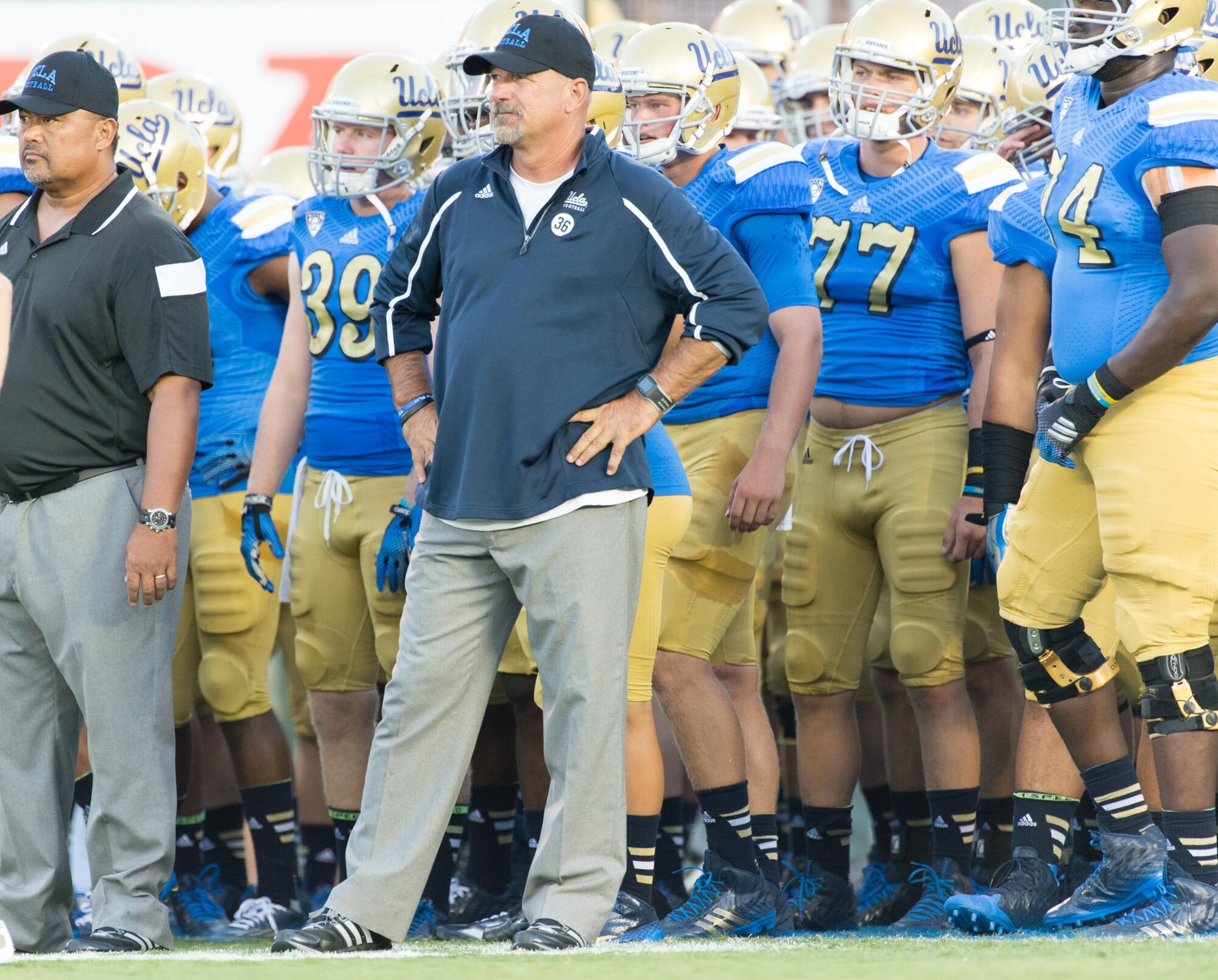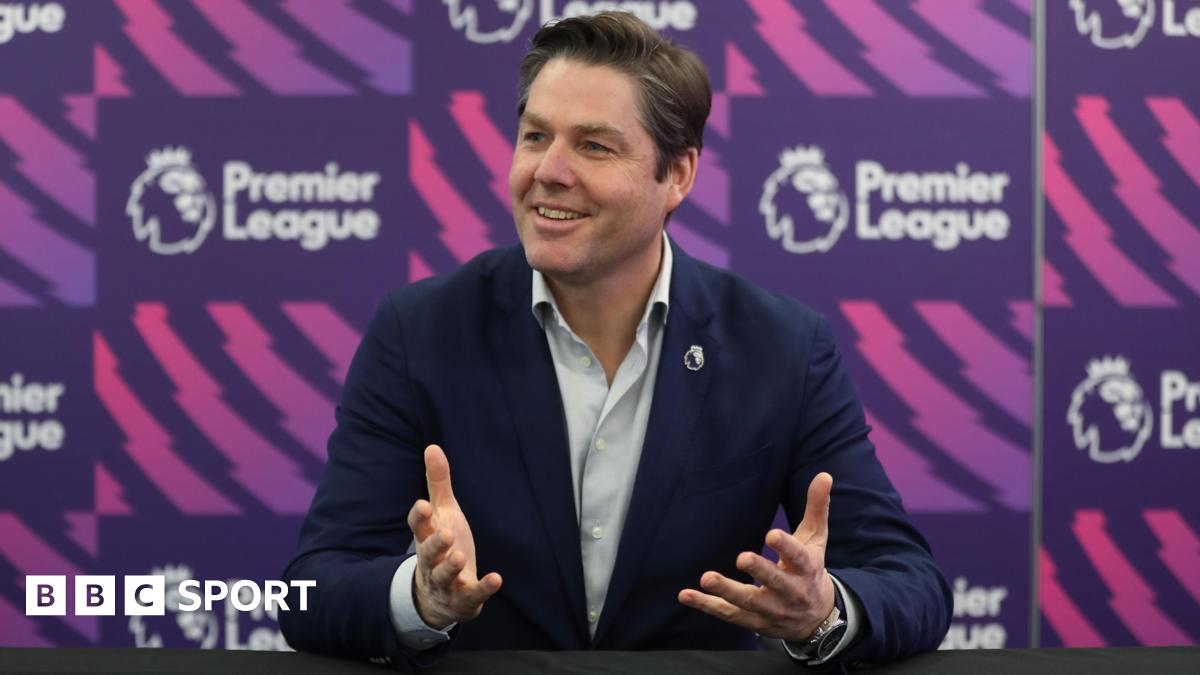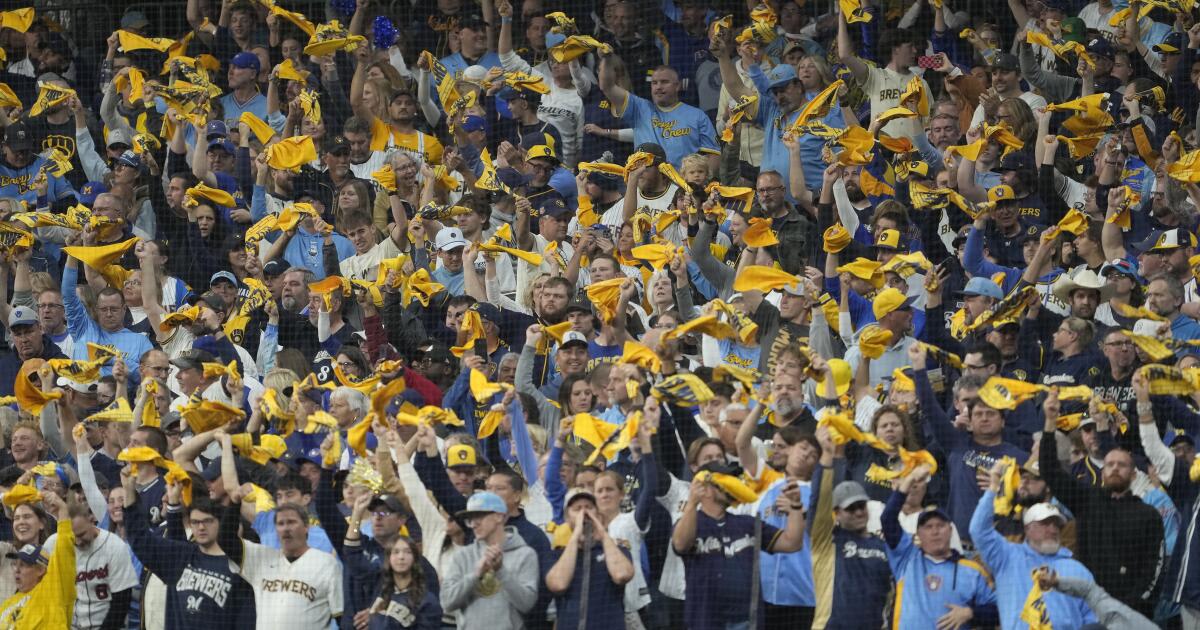Ex-Trump national security advisor Bolton charged in probe of mishandling of classified information
GREENBELT, Md. — Former Trump administration national security advisor John Bolton was charged Thursday in a federal investigation into the potential mishandling of classified information, a person familiar with the matter told the Associated Press.
The investigation into Bolton, who served for more than a year in President Trump’s first administration before being fired in 2019, burst into public view in August when the FBI searched his home in Maryland and his office in Washington for classified records he may have held onto from his years in government.
The existence of the indictment was confirmed to the AP by a person familiar with the matter who could not publicly discuss the charges and spoke to the AP on condition of anonymity.
Agents during the August search seized multiple documents labeled “classified,” “confidential” and “secret” from Bolton’s office, according to previously unsealed court filings. Some of the seized records appeared to concern weapons of mass destruction, national “strategic communication” and the U.S. mission to the United Nations, the filings stated.
The indictment sets the stage for a closely watched court case centering on a longtime fixture in Republican foreign policy circles who became known for his hawkish views on American power and who after leaving Trump’s first government emerged as a prominent and vocal critic of the president. Though the investigation that produced the indictment began before Trump’s second term, the case will unfold against the backdrop of broader concerns that his Justice Department is being weaponized to go after his political adversaries.
It follows separate indictments over the last month accusing former FBI Director James Comey of lying to Congress and New York Atty. Gen. Letitia James of committing bank fraud and making a false statement, charges they both deny. Both of those cases were filed in federal court in Virginia by a prosecutor Trump hastily installed in the position after growing frustrated that investigations into high-profile enemies had not resulted in prosecution.
The Bolton case, by contrast, was filed in Maryland by a U.S. attorney who before being elevated to the job had been a career prosecutor in the office.
Questions about Bolton’s handling of classified information date back years. He faced a lawsuit and a Justice Department investigation after leaving office related to information in a 2020 book he published, “The Room Where it Happened,” that portrayed Trump as grossly uninformed about foreign policy.
The Trump administration asserted that Bolton’s manuscript included classified information that could harm national security if exposed. Bolton’s lawyers have said he moved forward with the book after a White House National Security Council official, with whom Bolton had worked for months, said the manuscript no longer contained classified information.
A search warrant affidavit that was previously unsealed said a National Security Council official had reviewed the book manuscript and told Bolton in 2020 that it appeared to contain “significant amounts” of classified information, some at a top-secret level.
Bolton’s attorney Abbe Lowell has said that many of the documents seized in August had been approved as part of a pre-publication review for Bolton’s book. He said that many were decades old, from Bolton’s long career in the State Department, as an assistant attorney general and as the U.S. ambassador to the United Nations.
The indictment is a dramatic moment in Bolton’s long career in government. He served in the Justice Department during President Reagan’s administration and was the State Department’s point man on arms control during George W. Bush’s presidency. Bolton was nominated by Bush to serve as U.S. ambassador to the United Nations, but the strong supporter of the Iraq war was unable to win Senate confirmation and resigned after serving 17 months as a Bush recess appointment. That allowed him to hold the job on a temporary basis without Senate confirmation.
In 2018, Bolton was appointed to serve as Trump’s third national security advisor. But his brief tenure was characterized by disputes with the president over North Korea, Iran and Ukraine.
Those rifts ultimately led to Bolton’s departure, with Trump announcing on social media in September 2019 that he had accepted Bolton’s resignation. Bolton subsequently criticized Trump’s approach to foreign policy and government in his 2020 book, including by alleging that Trump directly tied providing military aid to the country’s willingness to conduct investigations into Joe Biden, who was soon to be Trump’s Democratic 2020 election rival, and members of his family.
Trump responded by slamming Bolton as a “washed-up guy” and a “crazy” warmonger who would have led the country into “World War Six.” Trump also said at the time that the book contained “highly classified information” and that Bolton “did not have approval” for publishing it.
Tucker, Durkin Richer and Kunzelman write for the Associated Press. Tucker and Durkin Richer reported from Washington.
US Grand Prix: Lewis Hamilton says report Ferrari are considering Christian Horner as future boss ‘distracting’
The seven-time champion is a supporter of Vasseur, who was instrumental in signing him.
Speaking during the drivers’ news conference before this weekend’s United States Grand Prix, Hamilton said: “It is a little bit distracting for us as a team. The team have made it clear where they stand in terms of re-signing Fred.
“Fred and the whole team are working really hard on a future for the team.”
Vasseur’s contract was due to expire at the end of this season, but it was renewed just two and a half months ago.
Ferrari tend not to comment on stories about the future of the team, considering it media speculation.
But when reports linking Horner to the team first emerged in the summer, Ferrari used channels to communicate to the media that there was no truth in the claim. The company’s position has not changed since.
Atlanta man charged in alleged theft of suitcases with Beyoncé’s music

Oct. 16 (UPI) — A Fulton County, Ga., grand jury has indicted Kelvin Lanier Evans for allegedly breaking into a vehicle rented by Beyonce‘s choreographer and stealing two suitcases during the summer.
Evans, 40, is accused of breaking into choreographer Christopher Grant’s rented 2024 Jeep Wagoneer on July 8 while Beyonce’s Cowboy Carter tour made a stop in Atlanta, CBS News reported.
Local prosecutors on Thursday confirmed that a grand jury indicted Evans on charges that accuse him of breaking a window to access the vehicle and stealing two suitcases.
One or both of the suitcases contained the hard drives on which unreleased music, plans for tour video footage and set lists for respective tour dates were stored.
They also contained jewelry, clothing and other valuables that have not been recovered.
Officers with the Atlanta Police Department arrested Evans on Aug. 26 and held him at the Fulton County Jail, according to Newsweek and local police records.
Evans has remained jailed in lieu of a $20,000 bond.
Grant reported the theft upon discovering the vehicle’s rear window was broken and the two suitcases were missing.
“They have my computers, and it’s really, really important information in there,” he said while reporting the theft to 911.
“I work with someone who’s of a high status,” he added. “I really need my computer and everything.”
The grand jury indicted Evans on Monday, and he is charged with criminal trespass and entering a vehicle with intent to commit theft, ABC News reported.
A preliminary hearing initially was scheduled for Thursday but was canceled after the grand jury indicted Evans.
Evans has a local arrest record dating to January 2002, with several more since, according to the Fulton County Sheriff’s Office.
His prior arrests include several for theft, armed robbery, assault, drug possession and other criminal violations.
Beyonce won a 2025 Grammy Award for Album of the Year for her Cowboy Carter release.
Panama’s president alleges US threatening to revoke visas over China ties | Donald Trump News
Jose Raul Mulino says the visa-removal policy is ‘not coherent’ with the ‘good relationship’ he hopes to have with the US.
Published On 16 Oct 2025
Panama President Jose Raul Mulino said that someone at the United States Embassy has been threatening to cancel the visas of Panamanian officials.
His statements come as the administration of US President Donald Trump pressures Panama to limit its ties to China.
Recommended Stories
list of 3 itemsend of list
Responding to a reporter’s question at his weekly news conference, Mulino said — without offering evidence — that an official at the US Embassy is “threatening to take visas”, adding that such actions are “not coherent with the good relationship I aspire to maintain with the United States”. He did not name the official.
The US Embassy in Panama did not immediately respond to a request for comment. The Trump administration has previously declined to comment on individual visa decisions.
But in September, the US Department of State said in a statement that the country was committed to countering China’s influence in Central America. It added that it would restrict visas for people who maintained relationships with China’s Communist Party or undermined democracy in the region on behalf of China.
Earlier this week, the Trump administration revoked the visas of six foreigners deemed by US officials to have made derisive comments or made light of the assassination of conservative activist Charlie Kirk last month.
Similar cases have surfaced recently in the region. In April, former Costa Rica President and Nobel Peace Prize winner Oscar Arias said the US had cancelled his visa. In July, Vanessa Castro, vice president of Costa Rica’s Congress, said that the US Embassy told her her visa had been revoked, citing alleged contacts with the Chinese Communist Party.
Panama has become especially sensitive to the US-China tensions because of the strategically important Panama Canal.
Secretary of State Marco Rubio visited Panama in February on his first foreign trip as the top US diplomat and called for Panama to immediately reduce China’s influence over the canal.
Panama has strongly denied Chinese influence over canal operations but has gone along with US pressure to push the Hong Kong-based company that operated ports on both ends of the canal to sell its concession to a consortium.
Mulino has said that Panama will maintain the canal’s neutrality.
“They’re free to give and take a visa to anyone they want, but not threatening that, ‘If you don’t do something, I’ll take the visa,’” Mulino said Thursday.
He noted that the underlying issue — the conflict between the US and China — “doesn’t involve Panama”.
‘Black Phone 2’ review: Dull horror sequel never comes to life
It’s clear from the existence and execution of “Black Phone 2” that Universal and Blumhouse never expected 2021’s “The Black Phone” to be a hit. If there was ever an inkling that the first film might have been more than a quick and dirty ’70s-style riff on a boogeyman tale, there’s no way those in charge would have let their big baddie, the Grabber, be killed off at the end of the movie.
But a hit it was and so, for a sequel, supernatural elements must be spun out and ’80s slasher classics consulted, especially since it’s now four years later, in 1982. Masked serial killer the Grabber, played by Ethan Hawke (we never really see his face, though we do hear his voice), continues to haunt, torment and maim children, despite the inconvenience of death.
Scott Derrickson and C. Robert Cargill co-wrote both films, with Derrickson behind the camera as director. The first was based on a short story by Joe Hill (the son of Stephen King) and is set in 1978 Denver, where plucky Finney Blake (Mason Thames) had to escape the clutches of kidnapper the Grabber while fielding phone calls from the ghosts of his previous victims, offering tips and tricks. What distinguished “The Black Phone” was its shocking approach to violence with its young characters, who all sported entertainingly profane potty mouths. While it was daring in its hard-R riskiness and played on our basest fears, it didn’t reinvent the wheel, or even try to. However, the film’s phone conceit played well enough and young star Thames was outstanding.
In “Black Phone 2,” Finney’s now a high school student, drowning his trauma in weed and schoolyard fights, sometimes the bully himself. He’s protective of his sister, Gwen (Madeleine McGraw), who has the gift of psychic sight, but mostly he just wants to check out from his own brain. The sequel is primarily Gwen’s movie. She starts lucid dreaming and sleepwalking, receiving phone calls from beyond — like from their dead mother when she was a teenager beyond.
The messages bring Gwen, Finney and her crush, Ernesto (Miguel Mora), to a winter retreat for Christian youth, Camp Alpine, now run by Mando (Demián Bichir) and his niece, Mustang (Arianna Rivas). As it turns out, this camp is rife with the ghosts of young dead boys — the phone keeps ringing and it won’t stop until Finney picks it up.
If “The Black Phone” dabbles in crimes that are taboo and is even unforgivable in its depiction of brutality against innocent children, “Black Phone 2” commits its own unforgivable crime of being dreadfully boring. This movie is a snooze, not just because all of the action takes place entirely during Gwen’s dreams.
The film can’t shake its lingering scent of “Stranger Things,” but the filmmakers have also turned for inspiration to another iconic ’80s-set property: The whole movie is a “Nightmare on Elm Street” ripoff, with a disfigured killer stalking his prey through their subconscious. Those sequences are fine, action-packed if not entirely scary, but at least it’s something more rousing than the awake scenes, where the characters stand in one place and make speeches to each other about their trauma and backstories. The entire affair is monotonously one-note and dour, with only a few pops of unintentional humor.
You realize almost immediately what the deal is with these ghost boys, but the film takes its sweet time explaining it all. It’s a fairly simple story, so you do understand why Derrickson gussies it up with grainy dream sequences and shaky 8mm flashbacks, and a pretty terrific electronic score composed by his son, Atticus Derrickson.
It’s also a bit surprising that “Black Phone 2” turns out to be so pious and deeply Christian, which is a bit of an odd mix. For a film about Jesus and the power of prayer, it also features a scene in which a kid’s face gets sliced in half by a windowpane. Then again, horror’s trend toward the faith-based isn’t a surprise when you take a look at the success of the Bible-thumping “Conjuring” franchise.
However, it seems like this might be the Grabber’s last hurrah. You’ll root for the characters to vanquish him only because then the drudgery might finally end. Who knows, maybe it’ll be a hit and they’ll figure out another way to reanimate this utterly uninspiring horror villain. Personally, I’ve had my fill of the Grabber’s grabbing.
Katie Walsh is a Tribune News Service film critic.
‘Black Phone 2’
Rated: R, for strong violent content, gore, teen drug use and language
Running time: 1 hour, 54 minutes
Playing: In wide release Friday, Oct. 17
What Can History Teach Us About Investing in 2025?
While history doesn’t repeat, it often rhymes.
In this podcast, Motley Fool analyst Jason Moser and contributors Travis Hoium and Jon Quast discuss:
- How 2025 compares to 1999 and 2007.
- What they wish they had known in the past.
- Energy’s role in AI.
To catch full episodes of all The Motley Fool’s free podcasts, check out our podcast center. When you’re ready to invest, check out this top 10 list of stocks to buy.
A full transcript is below.
This podcast was recorded on Oct. 10, 2025.
Travis Hoium: How does the market in 2025 fit into the history of the stock market? Motley Fool Money starts now.
Welcome to Motley Fool Money. I’m Travis Hoium joined today by Jon Quast and Jason Moser, and I think this is an important time in the market. Take a step back and look at a little bit of context in history. There are these decade long trends that we typically go through, and it seems like we’re either at the beginning or end of one of those with artificial intelligence and all of the companies that are going crazy right now. I want to get your guys’ thoughts on where we are. We all see the potential of artificial intelligence, but the Internet was a massive opportunity in 1999. Mobile was a huge opportunity in 2007. That didn’t stop the crashes that ensued. What historic parallels, Jason do you see in the market today that investors can learn from?
Jason Moser: Yeah well, I love this idea. I think there are a lot of parallels we can draw here. There are some similarities and I think there are some differences as well. You go back to for example, the buildout of the Internet back in 1999, the .com crash that ensued. I mean, there’s a lot of similarities from then to what’s going on today. There’s massive infrastructure buildout. It’s the foundation for what looks to be a new era of technology. It’s also accompanied by a lot of speculation in the markets. We’re seeing that in the form of a lot of nosebleed valuations. I mean, I’m not saying they’re all nosebleed valuations, but there is some data that shows that AI first companies today that are coming to market, are getting 20-40% premium valuations over their non AI driven types of companies. Then you’re also seeing some of the most speculative names are garnering valuations in the neighborhood of 200 times sales.
Travis Hoium: Some of them have gone parabolic just in the past few.
Jason Moser: Yeah, absolutely. I understand the enthusiasm, but there was an interesting interview with Orlando Bravo the other day on TV. He heads up the firm Toma Bravo which they specialize in SAS software and stuff like that. The question that was posed as it’s been posed to most of us is, are we in a bubble? He answered simply yes. I mean, you can’t have companies that are working on $50 million in annualized recurring revenue value to $10 billion, that just doesn’t work. It’s not sustainable. At some point, we will see that shift. But I do think there are some differences too. I mean, primarily, you look at the physical restraints of what was being built out back in 1999, that was laying all that optic cable. Physically difficult to do, but a little bit different than really the restraint today. Now we’re talking about power. We’re trying to figure out how to get the electricity, the power to really make all of this stuff run. I think funding is a little bit more realistic this time around just because so much of it is coming from the hyperscalers. Let’s put OpenAI aside here and look at the other companies, your Amazons, your Alphabets, your NVIDIAs of the world that are helping to fund a lot of this. When you have businesses that are that big with more reliable cash flows, I think the funding side of it seems to be a little bit less speculative than it was back then.
Travis Hoium: Do you think that has changed over the past, even the past few weeks with things like guaranteeing revenue? I think, you know, India did that with CR weave. You’re seeing more variable interest entities or they’re going by different names now, but it’s basically doing some of these financings off balance sheet. That’s what ultimately got Enron in trouble. That isn’t necessarily a parallel that we want to go down, but it’s one of those things where there are these small red flags that you can look throughout history and go, Okay, when you start to see this happen, you should perk up a little bit.
Jason Moser: I think you need to be asking the questions. I think it’s no accident that this week we really saw a lot of those maps circulating around that were showing the intertwinenss of all of these. It’s just a handful of companies that are really dictating the space and you want to put some numbers around it. I mean, this is what really makes me nervous. I think you look at Morgan Stanley research. They say that OpenAI itself, they make up more than $300 billion of this something like $880 billion total future contract value that’s tied to the spending with Microsoft, Oracle, and CR weave, among others. You think about that in the context of the fact that OpenAI, I mean, they just generated basically $13 billion annualized at the midpoint of 2025, and they’re losing money still hand over fist. Where that capital ultimately comes from I think, is a question that investors really need to be focused in on. It’s not to say that OpenAI won’t continue to grow, but that is a big Delta that they’re going to have to figure out a way to shore up.
Travis Hoium: Jon, how do you think about this in a more historical context? What things are you trying to learn from history that could maybe apply today?
Jon Quast: Well, I think historically, whenever you see something new and exciting, investors are wanting in on that and they’re not wanting to miss out. I’d say that applies to both retail investors and private equity investors. You can see that in a couple of fronts here that there are some companies, I think, that are preying on that, taking advantage of that, knowing that investors are willing to pay up for the excitement, the admission to the theme park. You look at the public markets, for example, look at special purpose acquisition companies.
Travis Hoium: These are SPACs. This is what was really popular in 2020 and 2021.
Jon Quast: Yeah, right before we had major, major pullback in so many of the companies out there. These are companies that don’t even have a business. They’re saying, give us money so we can go buy a business. Many of them came forward in 2020, 2021. There’s been a couple of years of a lull but now this year, we have 161 that have gone and filed so far this year, and the years not even over yet. That’s as much as basically the last three years combined. I’m not saying that they’re all bad opportunities. I’m not even saying that most, but I’m saying somewhere in there, the data is saying, yeah, somebody is taking advantage of a situation where investors are very excited and they’re willing to pay for a lottery ticket, essentially. The same thing in the private equity space, you look at the AI private companies out there starting to do perhaps some questionable things, maybe counting some one time deals as part of the calculation in their annual recurring revenue and doing that so that they can boost their valuations, and that increases the amount of funding that they’re able to get from these private investors. We would think that private investors are a little bit smarter than that. But again, I mean, we all have human psychology, and we don’t want to miss out on something that is truly transformative in artificial intelligence.
Travis Hoium: Jason, you brought up those images that are going around. There’s one from the FT, there’s one from Bloomberg, just show this web around OpenAI. One of the things that I think I learned in the 2008, 2009, downfall of the market and the recession that ensued was things just got really, really complicated when a lot of things didn’t need to be complicated. We started with mortgages, mortgage is a fairly straightforward financial instrument, but then you start turning it into 48 different products that you’re cutting into different pieces, and nobody knows where the risk is or who’s holding the risk. That’s what I get concerned about right now is, if AI is such a no brainer and it’s such a high return on investment, then why do we need all this complicated these complicated financial structures? Again, it’s just raising red flags to me. Let me put it this way because I think what we’re trying to do today is take a little bit of our knowledge and pass it on to everybody who’s listening. If you are going to go back, Jason, I’ll start with you, if you were going to go back and talk to yourself in 1999 or 2007, what would you tell yourself that you could maybe implement as an investor?
Jason Moser: Wow, yeah. I like that question a lot. I think if I look back to 1999, while I was investing at the time, I wasn’t a member of the Motley Fools. I think, first and foremost, and I’m being dead serious here, I would have told myself to get a subscription to the Motley Fool because from an educational perspective alone, I think that style of thinking, that style of investing and taking that longer term view is just invaluable. I’d also say, wow, it’s tempting. Steer clear of speculation. I think you’re right. One of the big problems back in 2007/8 was just how ununderstandable that web of financial instruments ultimately became. I think that was a result of greed primarily. But I also look at today and you’re talking about these special interest entities and whatnot. Money isn’t limitless and so I think they start to make it a little bit more complicated when they need to figure out ways to raise more money. That becomes a little bit more concerning as well. I’d say, for me, I’d steer clear speculation. These were stretches of time when some of the great businesses of our time went on sale. Stay focused on owning those high quality businesses, leave the speculating to those who think they probably know what they’re doing and maybe don’t necessarily actually know.
Travis Hoium: Jon, what do you think?
Jon Quast: So 1999, I wasn’t an investor yet, and so it didn’t really start for me until around the great recession.
Travis Hoium: You weren’t investing, but do you remember feeling the.com bubble and crash? Because I think that is an interesting until you actually have money in the market, it is kind of ah, this thing happens, but it doesn’t really affect me.
Jon Quast: Well, I would say absolutely not. I mean, just where we were in our little corner of North Carolina back in those days, I mean, man, we had dial up Internet. I mean, we weren’t even all that aware of what was going on. For me, the great recession was where I really began to take investing seriously. What I tell myself, besides what Jason already said was, I wish that I had just held on to my original vintage of stocks that I invested in. I know it’s 20 years later now, but I look at some of the ones that I had at the time. Buffalo Wild Wings, which is no longer publicly traded, but if I’d just held onto Buffalo Wild Wings from the time I invested until the time that it went private, it was a 10 bagger or more, and I sold after it doubled. I owned Marvel back before Disney acquired it and sold around the time of the announcement. I wish I had just held onto Disney all that time. McDonald’s was one of the first stocks I ever bought. Yeah, maybe that’s not the flashiest thing, but it’s up over 1,000% with dividends. I know some of the listeners are saying, hey, well, that’s 20 years ago, but let me tell you something. For me, it’s 20 minutes. I just started investing. Time goes by so fast. At the time you say, invest for three years, invest for five years. How could you ever? Twenty years is a heartbeat. Man, I wish I could just go back and say, hang on. Don’t try to get cute. Don’t try to buy and sell, trade, all this. Just buy and hold.
Travis Hoium: Yeah, Jon, the lessons that I have learned more than anything is not selling to give you an idea of what I owned in those days that I sold Chipotle, Apple, these are Las Vegas Sands. I remember buying for $2 a share. I think that was a 20 bagger over the next couple of years that I sold too early. Yeah, owning those companies that aren’t going anywhere that can survive any downturn, I would also say start paying attention to balance sheets. Because if companies are going to not survive, it’s not going to be the revenue drops a little bit. It’s going to be because there’s more risk on the balance sheet than they can handle. Something to keep in mind. When we come back, we are going to talk more about this buildout and where there could be opportunities you’re listening to Motley Fool money.
Come back to Motley Fool Money. One of the big topics of the AI buildout has been energy, and this has gotten a lot more attention over the past couple of months. Every hyperscalar, every Neo Cloud is looking for basically as much energy as they can get. Some of them have made deals with Bitcoin miners. I think that’s an interesting play here. Bitcoin Miners spent a lot of time building out the energy they need to run their mining equipment. Now we’re moving that to AI. Jon, where are the opportunities for investors in energy or at least what should we be keeping an eye at?
Jon Quast: Well, I think that nuclear power is big trend and I know that people have been hearing about it. I just think it’s going to be a lot of emphasis put there and even the emphasis that we put there isn’t going to be enough. You look at what OpenAI is reportedly wanting. They’re reportedly wanting 250 gigawatts of electricity by 2033, just for running their AI data centers. That’s just one company. President Trump earlier this year, signed an executive order to quadruple the country’s nuclear power. It will add basically 300 gigawatts of nuclear power. You look at that,250 is what OpenAI wants. We’re saying, we’ll add 300 gigawatts of nuclear power. Basically, they’ll take all of that.
Jason Moser: Doesn’t seem like a lot of wiggle room there, Jon.
Jon Quast: Exactly. Here’s the thing. The order is by 2050 to have that much extra power. President Trump is saying, we’re going to add 300 gigawatts. Give us 25 years. OpenAI is like, we need it now and so does every other company that’s doing what OpenAI is doing. I just think we’re going to have a heyday for nuclear, but even if we do, it’s still not going to be enough.
Travis Hoium: I want to put some numbers to this. The EIA, Energy Information Administration, which is a phenomenal source for energy information because they pull all the prices, all the capacity production, all that stuff. Between 2024 and 2028 in the US, there is a planned about 200 gigawatts of additions. About half of that, over half of that is solar, so an intermittent energy source. You have to consider that the capacity factor of solar, meaning the amount of time that it produces energy on an average day is about 20, 25% of the time. We’re not anywhere near hitting those numbers in what is planned, and power plants don’t go up. Even a solar plant, which can be built relatively quickly, you’re still talking many months, in some cases, years. All that said, Jason, where are you looking for opportunities today?
Jason Moser: It definitely feels like we’re going to need all we can get. It’s all hands on deck. I think the key is going to be focusing on every resource available. I think in regard to AI specifically and the capabilities that it’s driving, I think the overwhelming demand is going to be on those reliable or firm energy sources. The stuff that’s on 24/7 that’s easily distributable. Renewables are one thing. But I think for AI specific stuff, we’re going to be looking at nuclear, natural gas and hydro electric primarily. We saw Google earlier in the year made a deal to provide some early stage capital for elemental power to prepare some nuclear sites here in the US. I think those were those small modular reactors. The other thing to think about longer term and I’m talking about longer term, Travis, but think a decade out. There was an interview with Jeff Bezos this week that I was pretty, I was fascinated by because I actually could totally see this happening. He was talking about data centers in space. Essentially.
Travis Hoium: It sounds crazy.
Jason Moser: It sounds crazy. It does. It sounds like. But if you think about it, they’re already trying. They’re already in the process of trying to figure out how to make this work. Now, that solves two key problems. You get the limitless resource of solar up in space and you’ve solved your.
Travis Hoium: Suddenly, that becomes a base source of energy as opposed to variable.
Jason Moser: You solve your cooling problems as well. It knocks out you kill two birds with one stone, so to speak. I think that’s pretty interesting to think about just further out. Just keep an eye on that. I don’t think that’s high in the sky stuff. I think that’s actually pretty legit. Beyond that, I looked to other companies in the value chain that enable SMRT usage and monitoring. The company I’ve talked about before called Itron that does that. They help their customers safely and securely monitor that critical infrastructure and power and water. You can look beyond the providers and look to those value chain adders as well.
Travis Hoium: Do you think that the rise in electricity prices which again, is getting more attention this year, I’ve noticed it with my electricity bill Jason, is that a pending problem in the US because if AI is what’s raising the costs for the average person, seems like an issue.
Jason Moser: Consumers will not like it. I can guarantee you that. I mean, I noticed the power bill difference when the winter hits here in Northern Virginia, and it basically doubles. If we see things going beyond just your typical seasonality, I think that’s going to be a real problem.
Travis Hoium: Yeah, that’s something to keep an eye on because regulators do play a pretty big role in this, who’s gonna get the electricity? What are people paying? That’s not just an economics process, although the economics could help with justifying some of these investments too, something else to keep in mind is that, you know, energy costs are important, and if prices are going up, people are gonna put more money into the ground. When we come back, we’re going to see how well Jason and Jon know their history of investing you’re listening to Motley Fool money.
Welcome back to Motley Fool Money. I want to know how well Jason and Jon know their market history. I’m going to ask you guys a few questions and see who knows the answer. Jon, I’ll have you go first here. What was the date of the 1987 crash? As a bonus, how much did the Dow Jones Industrial average drop on that day?
Jon Quast: Oh, and I assume that you’re wanting more than the year 1987, yeah?
Travis Hoium: Yeah, I would like you can give me the day of the week. Any information is.
Jon Quast: Well, it was on a Monday.
Travis Hoium: What color was this Monday, Jon.
Jon Quast: Well, there we go. A very black Monday. I would think it’s in October, but I don’t remember.
Travis Hoium: Jason, do you know the date?
Jason Moser: I actually do know this one. It’s October 19th.
Travis Hoium: 1987 and how much did the Dow drop?
Jason Moser: Do we have a little wiggle room here? I know it was 20%. It was a little bit more than 20%, but I don’t think it was 25%. It was somewhere in the middle between 20 and 25%.
Travis Hoium: Oh, that’s good. Jon. Do you have an answer.
Jon Quast: I was going to say 12.
Travis Hoium: Okay, 22.6% drop for the Dow Jones Industrial average. But the other thing that’s interesting with that historically is the Dow was what really got all the attention back then. It was not the S&P 500. We don’t talk much about the Dow anymore, but it was those 30 stocks. That’s what was reported on the nightly news. That’s the numbers that everybody knew is, what was the Dow doing?
Jason Moser: Yeah, and it’s interesting to think about the difference between the Dow and the S&P. We talk about, they definitely tried to modernize the Dow to a degree. It’s a little bit more up to speed now. But there’s also that difference between the stock price weighted index, the Dow Jones.
Travis Hoium: Do you want to explain that? Because that is a really weird thing about the Dow.
Jason Moser: Yeah, essentially, I mean, you’re just looking at one index and the Dow where it’s basically measured by the value of the stock price itself.
Travis Hoium: The number, so if you have $100 stock, it has a 10X weighting of a stock that has a $10 stock.
Jason Moser: Whereas the S&P, it’s market capitalization weighted. You’re actually talking about how heavy the whole company is. Stock price can be a function of anything. I mean, stock splits and whatnot can change it. It is just interesting to see that difference there and how that ultimately plays out in the way those indices perform.
Travis Hoium: Yeah, and back then that was a big reason that a lot of stocks typically were kept with stock splits and things like that, between somewhere around $30 and $100 per share. We get 100, you would expect a stock split to come. We don’t really think about that anymore because we have fractional shares and all that kind. That stuff didn’t exist.
Jason Moser: Yeah, I think didn’t memory serves, I think when Apple joined the Dow and didn’t it actually split its stock in order to be able to facilitate that membership? I feel like that might have happened.
Travis Hoium: That is a historical question I do not have the answer to. Speaking of big tech though, and maybe I’m giving things away here, what was the most valuable company in the world on January 1st, 2000? Jason, I’ll have you go first here. This is .com bubo. Lots of options.
Jason Moser: There are a lot of options. Was it global crossing? I don’t know. Honestly, just I feel like that’s a Jon.
Jon Quast: I would guess Cisco.
Travis Hoium: That would have been my guess. Cisco was the most valuable company in the world for a short period of time, but that was in March of 2000 at the turn of the century to the millennium, it was Microsoft. That was really most valuable company in the world. Interesting, parallel to where we are today, Microsoft was the most valuable company in the world. That is still one of the most valuable companies in the world. But if you would have invested in Microsoft at the beginning of 2000 and held it for the next 15 years, you would have basically the same amount of money.
Jason Moser: I was going to say the Balmer years didn’t treat shareholders very well.
Travis Hoium: Yeah, and so there’s a couple of things. I mean, their business actually did fine during the 2000, but the end of the ’90s, early 2000s, the price that you were paying was extremely high, and so multiple compression, meaning the price to earnings multiple or the price to sales multiple was going down over that period of time. Instead of multiples being a tailwind, like they’ve been for a lot of stocks over the past couple of years, it was a headwind for Microsoft. Again, just something to think about as we think about the market today. Pets.com gets a lot of attention in the .com bubble. Do you know when pets.com IPOed, and what its highest market cap was before falling apart. Jon, I will have you go first. When was the IPO, and what’s the highest market cap?
Jon Quast: Oh, how should I know? I mean, you want more than the year.
Travis Hoium: Actually, you might not get the year.
Jon Quast: I know. I mean, I feel like this is a high bar. I’m gonna go with June 12th, 1995, and I’ll say peak valuation was 50 billion.
Travis Hoium: See, Jason, I’ll give you a guess here, but these numbers surprise me.
Jason Moser: Yeah, the IPO, I don’t know, so I’m just going to guess March 1997, valuation wise, I know given the valuations that we see today, you would want to say something like 50 billion or I get that. But I think actually it was really especially at that time. This was even big at that time. I think it was something like 450 million, $500 million.
Travis Hoium: Wow. You guys are both way off for the timing. Their IPO was February of 2000. Way later than I would have guessed. But, Jason, you’re almost exactly right. $400 million was their top market what I think is interesting about that is, that is the name that we all remember from the .com bubble. But it wasn’t all that big of a company.
Jason Moser: No. Well, I mean, at the time it was. I mean, consider.
Travis Hoium: But you’re looking at I think today’s prices, that would be still less than billion dollar.
Jon Quast: I literally 100 times more than that.
Jason Moser: They had obviously a very short lived campaign as a publicly traded company. But yeah, I mean, that was like the quintessential Internet stock. I mean, just advertising at the Yin Yang, found a clever brand with that little sock puppet puppy, and they were just selling stuff on the Internet, like, this is the way we do it and just making no money in the process. But it’s interesting how we gave Amazon so much leeway to build out that concept, and yet your pets.coms of the world just never really stood a chance.
Travis Hoium: The lesson that I take from that one because you’re right. Amazon has become, obviously a household name everywhere. But if you would have just waited. If you would have just said, I’m not going to invest. The Internet, I think, is a huge thing. But 1999 I’m just going to say, you know what? I’m going to let things play out a little bit and you just waited even till 2002, 2003, 2004, 2008, when you knew who the winners were, that was actually a great time to invest in even a company like Amazon.
Jason Moser: That’s a really good lesson.
Travis Hoium: This one’s fun. OpenAI has 800 million weekly active users. How many users did AOL have at its peak? Then I have a follow up, Jason. Users. How many subscribers? That’s the, basically households. We were sending disks around, in those days.
Jason Moser: That’s the thing, OpenAI, 800 million weekly some odd user, 20 million paying subscribers. They got to figure out a way to short that up. AOL, I have no idea. Households,125 million.
Travis Hoium: John?[laughs]
Jon Quast: Well, I want to change my answer now. I was going to go with eight million. Here’s why. You had other companies. You had Juno, you had NetZero. You had all those. The trend started, but then eventually we switched off of those things. I was going to say eight million.
Jason Moser: John, I could be spectacularly off.
Travis Hoium: John, you’re actually pretty close, 25 million was their peak. But here’s the follow up. When did AOL shut down its dial up service?
Jon Quast: I think I know this one. It was earlier this year.
Travis Hoium: Jason do you want to?
Jason Moser: I was going to say, you would think they did this 15 years ago. It just happened, like John said, very recently. I think sometime within the last year, they actually stopped the whole thing.
Travis Hoium: It was last week.
Jon Quast: I would love to know the guy who was still using it two weeks ago.
Travis Hoium: Who was shocked that their Internet was shut down.
Jason Moser: Not one person.
Travis Hoium: I got a couple of quick ones here. At its peak, how much was invested annually in the USTelecom buildout? The thing that I wanted to bring in here is we talk about the .com bubble bursting. But in the late ’90s, there was really two bubbles. There was the Internet bubble, so the companies that was a valuation bubble, and there was basically an investment bubble where telecoms were investing a lot of money in building out the fiber that Jason mentioned earlier. But what was the actual number that they were putting in the ground? This is just in the US. What is your guess, Jason? Annual number, annual peak.
Jason Moser: One hundred billion dollars.
Travis Hoium: John.
Jon Quast: Did you say million or billion?
Jason Moser: Billion.
Jon Quast: Man, I was going with 10 billion.
Jason Moser: Again, it could be spectacularly off.
Travis Hoium: Jason, you’re about right, 118 billion in 2000. I believe we’ve only passed that number in two years since then. Interesting that the telecom buildout was basically hockey stick growth rate, and then it just plateaued. The other one that we’re not going to get to that is a similar is Apple in 2007, sold 1.4 million iPhones. 2015, that got up to 231 million, and then essentially plateaued. The question, for all these businesses is, when do you hit that plateau? Because that’s when you could potentially run into problems. Here’s the one I wanted to end on quickly. From January 1st, 2000 to March 2000, how much did the QQQ NASDAQ-100 rise? Then my follow up is, how much did it fall over the next six months, John? How much did it go up in those first three months? How much did it go down in the next six?
Jon Quast: I’m going to guess for going up, I’m going to guess it went up 15% during those three months. Then I believe there was a 50% drawdown from there.
Travis Hoium: Jason?
Jason Moser: I was going to say 20% for the first one. Then for the next six months, from that point, I think it fell.
Travis Hoium: From March to September.
Jason Moser: March to September, I would say it fell probably a good 60%.
Travis Hoium: Up 18% in those first, a little less than three months. Then over the next six months, fell 71%. Up an escalator out of window is the way that we quit this. Well, hopefully that was good context for people because I think we can always learn from history whether things repeat or not, they typically rhyme. I think that’s how the saying goes. When we come back, we will get to the stocks that are on our radar. You’re listening to Motley Fool Money.
As always, people on the program may have interest in the stocks they talk about and the Motley Fool may have formal recommendations for or against, so don’t buy or sell stocks based solely on what you hear. All personal finance content follows Motley Fool editorial standards and is not approved by advertisers. Advertisements are sponsored content and provided for informational purposes only. To see our full advertising disclosure, please check out our show notes. One company I want to bring into the discussion, we’ve high level, talked about history and AI. But Google had some interesting announcements. OpenAI is obviously getting all the attention, but Google Gemini Enterprise was announced this week. Jason, what did you take away from that?
Jason Moser: A few things, I think. I use both Gemini and ChatGPT interchangeably. Probably use Gemini a little bit more. I wasn’t terribly surprised to see the announcement because this is an arms race. I think it speaks to Google’s ability to respond to market forces and competition. I think, also the real advantage that it has, and it’s already massive user base and the powerful business model, not to mention just customer mind share. I think ChatGPT absolutely is doing a great job on customer mind share, but going back to earlier in the show, when we were talking about 800 million some odd weekly users, only 20 million really of those are subscribers. I think that is just a big hurdle for a company like ChatGPT to overcome. The reason why Google doesn’t have to worry about it so much is because they’ve got a business that’s funded by this powerful advertising model, not to mention it’s growing Cloud business, as well. Now, when you look at Google in this space, they’re a total package. What’s that? They call it a full stack player?
Travis Hoium: A few of the things they announced, it pulls Gemini into applications. This goes into GCP, Google Cloud Platform. That is actually a profitable business. I think that’s something, as investors, we should highlight. OpenAI is losing money. They’re not public yet, but this is a huge growth business for Google and for Alphabet, and it is now profitable, as well. I think the idea here is, this is going to be an enterprise play along with, hey, you know what? If Gemini as a consumer app wins great.
Jason Moser: Well, I think this shows a couple of things. This technology at its core is totally replicable. Basically, all they need is the resources and the time to be able to do it. I think the thing that’s not necessarily replicable is the power under the hood, so to speak, with what Google has built through the decades. ChatGPT is just not there yet. It’s not to say they can’t get there. Don’t get me wrong, but I’m just saying that it’s a much younger company that still has a lot to prove. From that perspective, again, I look at something like a Google today, and I think, wow, they’re doing a lot of really neat stuff. I think ChatGPT is doing a lot of really neat stuff, too. I think we’re going to see at some point, OpenAI is going to have to resort to some sort of an ad supported model in order to be able to continue generating that revenue, or they’re just going to have to come up with a way to grow that subscriber number, which is just so small today compared to what Google has just on an ongoing basis.
Travis Hoium: The 800 pound gorilla in the room that we always continue to overlook. Let’s get to this accident on our radar. John, I’m going to have you go first. What is on your radar this week?
Jon Quast: On my radar right now is a company called Rubrik that is ticker symbol RBRK. This is a small cybersecurity company. But what I like about this is that it’s not trying to prevent attacks. Its business model is assuming an attack has already taken place, and it’s going to get your business back up and running in a fraction of the time. You think about that. That’s really an interesting counter positioning, when it comes to maybe what your CrowdStrikes of the world are trying to do. That’s really interesting. It trades at about 15 times its sales. You look at its annual recurring revenue. It’s up 36%. That’s a good growth. Gross margin has jumped to about 80%. Those two things right there signal to me that I don’t think it looks terribly overvalued. It does generate positive free cash flow, despite being a young business. It has a net cash position. It’s adding new customers at a good pace. But with only 2,500 spending 100,000 a year, I think there’s plenty of room to grow that. Net dollar retention is over 120%, so its existing customers are spending more over time. I really like its co-founder and CEO, Bipul Sinha. He really values this mentality of basically innovate or cease to be a business. That could make things a little bit volatile, but I think it’s going to also potentially make it a key innovator here in the cybersecurity space. It’s definitely on my radar and one I’m watching.
Travis Hoium: Dan, what do you think about Rubrik?
Dan Caplinger: I do like the company, John, but I have a question about what they call themselves. They call themselves a zero trust data security and zero trust doesn’t exactly make me feel good.[laughs].
Jon Quast: That’s an unfortunate way to talk about it in the trade.
Travis Hoium: Jason, what is on your radar?
Jason Moser: Something we’ve been doing here on the website recently with the analyst team, it’s something we’re calling the Analyst Stream, and a couple of days a week, we’re taking a topic of the day and all just offering our spin on it. Today, Friday, we’ve got safety stock pitches for folks. A stock that I recently purchased from my own portfolio with safety in mind is Waste Management. Ticker is WM. As the old saying goes, your trash is my treasure, and we certainly produce a lot of trash here, but weights management, they own or operate the largest network of landfills in the US and Canada with 262 sites, making it the top dog. They also benefit from a growing recycling segment, renewable energy segment, and healthcare solutions business, too. Because you remember they just acquired Stericycle last year, I think, given the nature of the market there, trash is pretty reliable. I think holding onto this one for a decade or longer makes a lot of sense for investors.
Travis Hoium: Dan, what do you think about investing in garbage?
Dan Caplinger: Garbage isn’t going anywhere, gang. We’re not going to stop making it. It’s going to be something that we’re going to have to deal with forever.
Jason Moser: As the kids say, Dan, it true.
Travis Hoium: Dan, Rubrik or Waste Management, which one is going on your watches?
Dan Caplinger: Like I said, garbage ain’t going anywhere. We’re going to go Waste Management. I like that dividend, too.
Travis Hoium: We are out of time this week. Thank you for listening to Motley Fool Money. We’ll see you here tomorrow.
Billionaire Illinois Gov. Pritzker wins blackjack pot of $1.4M in Las Vegas
SPRINGFIELD, Ill. — It figures that a billionaire would win big in Las Vegas.
Illinois Gov. JB Pritzker reported a gambling windfall of $1.4 million on his federal tax return this week.
The two-term Democrat, often mentioned as a 2028 presidential candidate, told reporters in Chicago on Thursday that he drew charmed hands in blackjack during a vacation with first lady MK Pritzker and friends in Sin City.
“I was incredibly lucky,” he said. “You have to be to end up ahead, frankly, going to a casino anywhere.”
Pritzker, an heir to the Hyatt hotel chain, has a net worth of $3.9 billion, tied for No. 382 on the Forbes 400 list of the nation’s richest people. A campaign spokesperson said via email that Pritzker planned to donate the money to charity but did not respond when asked why he hadn’t already done so.
Pritzker, who intends to seek a third term in 2026, was under consideration as a vice presidential running mate to Kamala Harris last year. He has deflected questions about any ambition beyond the Illinois governor’s mansion. But he has used his personal wealth to fund other Democrats and related efforts, including a campaign to protect access to abortion.
His profile has gotten an additional bump this fall as he condemns President Donald Trump’s immigration enforcement in Chicago and the president’s attempt to deploy National Guard troops there.
The Pritzkers reported income of $10.66 million in 2024, mostly from dividends and capital gains. They paid $1.6 million in taxes on taxable income of $5.87 million.
Pritzker is an avid card player whose charitable Chicago Poker Challenge has raised millions of dollars for the Holocaust Museum and Education Center. The Vegas windfall was a “net number” given wins and losses on one trip, he said. He declined to say what his winning hand was.
“Anybody who’s played cards in a casino, you often play for too long and lose whatever it is you won,” Pritzker said. “I was fortunate enough to have to leave before that happened.”
O’Connor writes for the Associated Press. AP writer Sophia Tareen contributed to this report from Chicago.
Jerry Neuheisel and mentor Noel Mazzone reunite to jumpstart UCLA
They’re calling their favorite audible again.
One quarterback guru contacts the other, asking for help in creating a dynamic offense.
The answer is always yes. The results say as much about Jerry Neuheisel and Noel Mazzone’s devotion to one another as they do about their ability to mass-produce yards and points for UCLA.
“No matter what happens,” Neuheisel said in an interview with The Times, “as long as you’re around him you have a smile on your face.”
Noel Mazzone, then the offensive coordinator at UCLA, looks across the field during a game.
(Don Liebig / UCLA Athletics)
The latest call came from the longtime apprentice to his mentor.
With the Bruins sputtering toward an 0-4 start, Neuheisel spoke with Mazzone about possibly returning to Westwood to assist with the offense. Just like he routinely had when he was UCLA’s offensive coordinator a decade earlier, Mazzone cultivated the necessary intelligence, learning that Neuheisel would be promoted from tight ends coach to playcaller before Neuheisel did.
“He was in the car, I believe, the next morning and he was here that evening,” Neuheisel said, “and it was on to try to beat Penn State.”
Beat Penn State they did, reviving an offense and a team that have become the talk of college football. UCLA’s average of 40 points in its two victories has nearly tripled its previous output during that winless start, spawning reminders of the offense the Bruins ran under Mazzone with Neuheisel as a backup quarterback from 2012-15.
That was just the start of a winning combination.
Not long after they had parted ways at the end of their four seasons together in Westwood, Mazzone reached out to Neuheisel, convincing him to give up playing for the Obic Seagulls of Japan’s X League so that he could help Mazzone in 2017 during his second season as Texas A&M’s offensive coordinator.
“When he gave me the call and said, ‘We’re going to the SEC, we’re going to College Station, Texas,’ ” said Neuheisel, who had long known he wanted to become a coach, “I didn’t even ask questions. I got the next flight home.”
Quarterback Jerry Neuheisel looks to pass the ball during UCLA’s game against Texas Longhorns at AT&T Stadium on Sept. 13, 2014.
(Ronald Martinez / Getty Images)
After making the 22-hour drive from Los Angeles to College Station, Neuheisel stayed at a hotel for a week and a half while searching for a place to live — even though he hadn’t been formally hired.
All that mattered was that he was back with his mentor. Now they’re together again, only the roles have been reversed.
“It’s just the first time in my life he’s actually had to listen to all my ideas,” Neuheisel said with a chuckle, “so I have enjoyed the turning of the tables.”
It was only a few weeks ago that Mazzone reconnected with two other former UCLA quarterbacks.
Getting together with Brett Hundley and Mike Fafaul in the Phoenix area to watch some football the weekend that UCLA lost to Northwestern to fall to 0-4, Mazzone and his onetime players let Neuheisel know they were thinking about him.
“They sent a picture from the bar that they were watching us play,” Neuheisel said.
What they didn’t tell him was that they were already considering the possibilities for the 68-year-old Mazzone, who was then the offensive coordinator at Saguaro High in Scottsdale, Ariz.
“At the time, we weren’t doing so great,” Hundley said of the Bruins, “so we were joking that Mazzone would probably be back at UCLA.”
A coaching lifer, Mazzone had made more than 20 stops at the high school, college and NFL levels by the time he agreed to hop into his car and return for his second stint with the Bruins after the team replaced departed offensive coordinator Tino Sunseri with Neuheisel.
Several days later, after hurried preparations and some playcalling debut blunders such as Neuheisel fumbling with the button on his headset that allowed him to talk to his quarterback, UCLA scored on each of its first five drives on the way to a 42-37 victory over then-No. 7 Penn State that qualified as the upset of the college football season.
Jubilant players hoisted Neuheisel onto their shoulders in a scene reminiscent of his greatest moment playing for Mazzone and coach Jim Mora, when he came off the bench to lead a comeback victory over Texas in 2014.
UCLA quarterback Jerry Neuheisel, top, is carried off the field after UCLA’s 20-17 win over Texas on Sept. 13, 2014, in Arlington, Texas.
(Tony Gutierrez / Associated Press)
About a half hour after beating the Nittany Lions, his hair still soaked from the water players had sprayed into the locker room air, Neuheisel revealed what it meant to share this new memory with one of his favorite mentors.
“To have coach Mazzone here has been honestly one of the coolest things ever,” Neuheisel said. “To have him helping with the quarterbacks, to have us to be able to bounce ideas off of him, awesome. Awesome.”
In some ways, the circumstances weren’t that much different when they met.
Neuheisel was the new guy, just trying to prove himself.
In the fall of 2012, he was a freshman quarterback, wanting to show he belonged on the same campus where only a few months earlier his father, Rick, had been fired as the head coach. Mazzone was also a recent arrival after having been hired as part of Mora’s first UCLA staff.
“Jerry’s coming in and you’ve got Kevin Prince, Brett Hundley, Richard Brehaut — I mean, he’s walking into a quarterback room with some studs,” remembered Johnathan Franklin, the running back who would become UCLA’s all-time leading rusher by the end of that season. “All three have played before, and Brett Hundley obviously was a rock star.”
UCLA quarterback Jerry Neuheisel sits on the field before a game against Virginia at the Rose Bowl on Sept. 5, 2015.
(Jae C. Hong / Associated Press)
It was a unique kind of pressure for a legacy who had been born at UCLA Medical Center at a time when his father was a Bruins assistant coach, after having starred for his alma mater as a Rose Bowl-winning quarterback.
“I was just there trying to make the team,” Neuheisel said.
What became quickly apparent given his intrinsic savvy and inquisitive nature was that his longterm future would likely be on the sideline.
“Jerry, for sure, you could always tell he was gonna be a coach from Day One,” Hundley said. “It was like his Pops 2.0.”
Equally impressive was the shrewd offensive coordinator who was quick with a quip and an answer for any challenge a defense might present. Mazzone ran an offense short on plays and long on possibilities. He would explain why certain plays worked in given situations and make sure even the quarterback understood blocking schemes so that everyone appreciated each other’s roles.
“It’s pretty much, you get your best players in space and you make a play,” Franklin said of the overriding philosophy. “I remember he used to call the plays, and he’s like, ‘Man, one guy shouldn’t tackle you, so we’re not going to work on blocking that guy — that’s between you and him, you’ve got to make it happen.’ ”
UCLA offensive coordinator Noel Mazzone leans over on the sideline and looks across the field during a game.
(Don Liebig / UCLA Athletics)
UCLA won 29 games in its first three seasons with Mazzone running the offense and Neuheisel playing a reserve role, except for the September day in 2014 when he earned a megawatt spotlight.
With Hundley sidelined by an elbow injury against nationally ranked Texas, Neuheisel came off the bench and threw a 33-yard touchdown pass to Jordan Payton with three minutes left, rallying the Bruins to a 20-17 victory. His teammates hoisted him into the air and carried him off the field.
“I mean, unbelievable,” Mazzone said after the game. “Jerry went out and handled the situation better than anyone could. I mean, he really did an awesome job. Really proud for him.”
When he called a reporter after 8 o’clock Wednesday night, Neuheisel wasn’t done for the day. It was just a momentary respite from reviewing game video, several hours left to go before he could finally head home.
His schedule has become so crazed since his promotion that tight end Hudson Habermehl recently fielded a call from Neuheisel’s wife, Nicole, asking him to take an Uber Eats delivery order upstairs to Neuheisel’s office inside the practice facility.
Habermehl was happy to do it, a small thank-you gesture for the 33-year-old coach who has done so much for him and an offense that doesn’t resemble the one from earlier this season even though the Bruins are essentially running the same plays.
If it looks more like a Mazzone offense, that’s not by coincidence.
UCLA offensive coordinator Jerry Neuheisel hugs Bruins quarterback Nico Iamaleava during the Bruins’ win over Penn State on Oct. 4.
(Gina Ferazzi/Los Angeles Times)
“What made Noel’s offense so great and why I loved it is there was a utilization of space on the field,” Neuheisel said, “and I would say that is what we’ve been trying to emulate is trying to create space on the field and trying to create matchups for our players to have success.”
No one has benefited more than quarterback Nico Iamaleava, who has thrown for five touchdowns with no interceptions over the last two weeks while adding three rushing touchdowns. A previously inert running game has picked up considerable speed, averaging 253.5 yards in the victories over Penn State and Michigan State.
“It seems like there’s a new energy on offense,” Hundley said. “You know, it’s not like they got a whole new starting 11 out there. I mean, it’s the same guys that we were talking about in the beginning of the season, but now they’re putting Nico in a position to make plays.”
Habermehl said everyone’s playing freely and instinctively because Neuheisel explained the reasoning for each play and involved all position groups in offensive meetings to provide a universal understanding of concepts.
“When you coach guys,” Neuheisel said, “you need to let them in on the ‘why.’ I think it’s what I always appreciated when I was a player here and any good team I’ve been a part of.”
Neuheisel’s latest success is likely to earn him a permanent offensive coordinator job, if not a head coaching opportunity, next season. His old friend can probably expect a call asking if he’d like to be part of that staff, the answer a given.
“Wherever there’s ball,” Neuheisel said, “he’ll always find his way there.”
Palestinian prisoner reunites with family he was told were dead | Newsfeed
While in Israeli detention, Palestinian photojournalist Shadi Abu Sido was told his wife and children had been killed in Gaza. But when he was released under the ceasefire deal, he discovered they were alive.
Published On 16 Oct 2025
No Maccabi Tel Aviv fans allowed at Aston Villa for Europa League tie
West Midlands Police said the upcoming game has been classified as “high risk” following a “thorough assessment”.
A spokesperson said: “This decision is based on current intelligence and previous incidents, including violent clashes and hate crime offences that occurred during the 2024 Europa League match between Ajax and Maccabi Tel Aviv in Amsterdam.
“Based on our professional judgement, we believe this measure will help mitigate risks to public safety.
“While the safety certificate is issued by Birmingham City Council, West Midlands Police supports the decision to prohibit away supporters from attending.”
Football’s European governing body Uefa said it wanted fans to be able to travel and support their team in a “safe, secure and welcoming environment”.
Uefa told Reuters: “In all cases, the competent local authorities remain responsible for decisions related to the safety and security of matches taking place on their territory.”
Arrests were made after violence broke out before the match between Ajax and Maccabi Tel Aviv in November last year.
Amsterdam officials described the violence as a “toxic combination of antisemitism, hooliganism, and anger” over the war in Gaza, Israel and elsewhere in the Middle East.
A ceasefire in Gaza came into effect on 10 October.
Celebrity Traitors LIVE: Jonathan Ross feels wrath of viewers as show favourite killed off
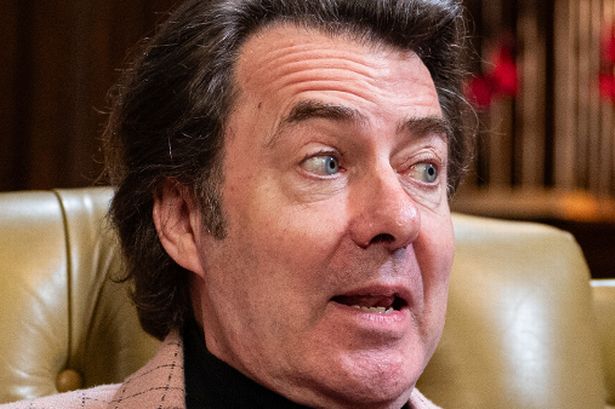
In the upcoming Celebrity Traitors episode, after three faithfuls, Niko Omilana, Tom Daley, and Tameka Empson were banished and murdered, tension soars as multiple celebrities face possible elimination and secret plots unfold
Source link
Why Did NuScale Power Stock Rocket Over 20% This Week?
NuScale Power’s modular nuclear technology is finding more and more users.
NuScale Power (SMR -8.95%) stock has had a breakout year. Shares are up more than 170% since the start of 2025. It hasn’t been a smooth ride for shareholders, though. NuScale stock has plunged about 40% twice just since January.
This week was another turbulent period for the stock. As of late Thursday, NuScale Power shares are 15% off this week’s highs, yet still up by 24.2% since last Friday’s close, according to data provided by S&P Global Market Intelligence.

Image source: Getty Images.
NuScale Power’s Trump tailwind
NuScale has been a big beneficiary of what it calls “multi-billion dollar federal support.” Several executive orders signed by President Trump earlier this year have boosted the nuclear power sector. Even prior to the current Trump administration, bipartisan passage of the ADVANCE (Accelerating Deployment of Versatile, Advanced Nuclear for Clean Energy) Act of 2024 has helped streamline approvals by the National Regulatory Commission for faster deployment of nuclear power projects.
This week another federal department spurred investors to jump into NuScale Power stock. The U.S. Army announced the launch of the Janus Program. The initiative is meant to fast-track the installation of commercially owned and operated small nuclear reactors to provide energy to domestic military installations.
Investors should be wary of jumping into NuScale stock after this week’s surge, though. While it has just begun generating revenue from a Romanian power project, investors have pushed its enterprise value to over $6.5 billion. Consider that revenue for the second quarter was just $8.1 million. Investors who believe in the future of modular nuclear reactors should still consider it a speculative investment.
Trump warns ‘we will have no choice’ but to engage and kill Hamas if bloodshed persists in Gaza
WASHINGTON — President Trump on Thursday warned Hamas “we will have no choice but to go in and kill them” if internal bloodshed persists in Gaza.
The grim warning from Trump came after he previously downplayed the internal violence in the territory since a ceasefire and hostage deal between Israel and Hamas went into effect last week.
Trump said Tuesday that Hamas had taken out “a couple of gangs that were very bad” and had killed a number of gang members. “That didn’t bother me much, to be honest with you,” he said.
The president did not say how he would follow through on his threat posted on his Truth Social platform, and the White House did not immediately respond to a request for comment seeking clarity.
But Trump also made clear he had limited patience for the killings that Hamas was carrying out against rival factions inside the devastated territory.
“They will disarm, and if they don’t do so, we will disarm them, and it’ll happen quickly and perhaps violently,” Trump said.
The Hamas-run police maintained a high degree of public security after the militants seized power in Gaza 18 years ago while also cracking down on dissent. They largely melted away in recent months as Israeli forces seized large areas of Gaza and targeted Hamas security forces with airstrikes.
Powerful local families and armed gangs, including some anti-Hamas factions backed by Israel, stepped into the void. Many are accused of hijacking humanitarian aid and selling it for profit, contributing to Gaza’s starvation crisis.
The ceasefire plan introduced by Trump had called for all hostages — living and dead — to be handed over by a deadline that expired Monday. But under the deal, if that didn’t happen, Hamas was to share information about deceased hostages and try to hand them over as soon as possible.
Israeli Prime Minister Benjamin Netanyahu said Wednesday that Israel “will not compromise” and demanded that Hamas fulfill the requirements laid out in the ceasefire deal about the return of hostages’ bodies.
Hamas’ armed wing said in a statement Wednesday that the group honored the ceasefire’s terms and handed over the remains of the hostages it had access to.
The United States announced last week that it is sending about 200 troops to Israel to help support and monitor the ceasefire deal in Gaza as part of a team that includes partner nations and nongovernmental organizations. But U.S. officials have stressed that U.S. forces would not set foot in Gaza.
Israeli officials have also been angered by the pace of the return of the remains of dead hostages the militant group had been holding in captivity. Hamas had agreed to return 28 bodies as part of the ceasefire deal in addition to 20 living hostages, who were released earlier this week.
Hamas has assured the U.S. through intermediaries that it is working to return dead hostages, according to two senior U.S. advisors. The advisors, who were not authorized to comment publicly and briefed reporters on the condition of anonymity, said they do not believe Hamas has violated the deal.
Madhani writes for the Associated Press.
Premier League clubs divided over spending limit proposals
Premier League clubs are divided over whether to introduce a controversial new ‘salary cap’ prior to next month’s vote on financial regulations, BBC Sport has been told.
The ‘top-to-bottom anchoring’ model – or TBA – would restrict the amount any club can spend on player wages, agents and transfer fees to five times the income earned from broadcasting and prize money by the bottom club in the English top flight.
The approach means that a cap would be imposed on clubs’ spending, regardless of their own income.
TBA is currently being trialled by the Premier League, alongside a ‘squad cost ratio’ (SCR) system of financial control that allows clubs to spend up to a percentage of their total revenues on squad-related costs.
On 21 November the Premier League will meet and vote on whether to adopt either, or both, models, and replace the current Profit and Sustainability Rules (PSR) that allow losses of £105m over a three-year reporting cycle.
Nine of the Premier League’s 20 clubs already have to comply with Uefa’s SCR rules as a result of qualifying for Europe, and some believe it makes sense to align the regulations.
In order to encourage sustainability, Uefa permits participants in its competitions to spend up to 70% of their revenues on their squads, while the Premier League has said it would allow a more generous 85%.
However, BBC Sport has been told that a number of Premier League clubs would only vote for SCR to be implemented if it was accompanied by ‘anchoring’, so that those with the largest revenues did not get too far ahead of the rest, and competitive balance was protected.
This stance has been hardened by the additional money being generated by expanded European club competitions and the Club World Cup.
Last year 16 clubs voted to conduct detailed analysis of TBA, with only Manchester United, Manchester City and Aston Villa voting against.
All three were known to be concerned that being pinned to the revenue of the league’s bottom-placed club would risk putting them at a disadvantage compared to some of their European rivals, who only have to adhere to SCR rules.
At the time, United co-owner Sir Jim Ratcliffe said anchoring would “inhibit the top clubs in the Premier League, and the last thing you want is for the top clubs in the Premier League not to be able to compete with Real Madrid, Barcelona, Bayern Munich, Paris St-Germain – that’s absurd”.
In the 2023-24 season, 20th-placed Sheffield United earned around £110m. So last season no top-flight club would have been able to spend more than a total of £550m on player wages, amortised transfer fees and agents if TBA had been in force.
Meanwhile, a European club generating revenues of £1bn, for example, would be able to spend £700m while still adhering to Uefa’s SCR rules.
Manchester City spent £413m on wages last year, with total revenue of £715m.
Ahead of its meeting next month the Premier League has now sent proposals to its clubs, which reportedly include a suggestion that those in breach of anchoring rules could be punished with a points deduction.
Everton and Nottingham Forest were handed points deductions in 2023 and 2024 as a result of breaching PSR.
Back in February the Professional Footballers’ Association (PFA) issued what the Premier League described as “legal demands” over concerns it had about the impact that anchoring could have on player contracts if introduced.
The league said that the players’ union had been given “multiple opportunities to provide feedback”. The PFA remains opposed to TBA, and has hired barrister Nick de Marco in case it decides to launch legal action.
In 2021 the PFA’s claim that a planned salary cap by the EFL for League One and League Two was “unlawful and unenforceable” was upheld by an independent arbitration panel.
Sen. Mitch McConnell falls on his way to vote in the Senate
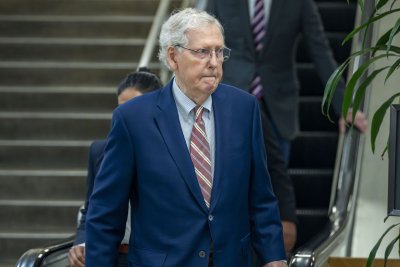
Oct. 16 (UPI) — U.S. Sen. Mitch McConnell, R-Ky., fell down in a Capitol hallway Thursday on his way to the Senate to vote.
McConnell, 82, announced earlier this year that he would not seek re-election when his term ends in 2026.
Two volunteers from an environmental advocacy group were questioning McConnell as he walked and he fell to the floor. He didn’t answer the question. He was quickly helped up by his aides and a security guard. He smiled and waved at the video and continued his walk.
The Senate was staging votes on Thursday related to the government shutdown, which is in its 16th day. McConnell voted after the fall, and he is expected to vote later in the day.
Retired Marine pilot Amy McGrath announced last week that she is running for McConnell’s seat in 2026.
McGrath, a moderate Democrat and former candidate for the House and the Senate from Kentucky, launched her campaign earlier this month.
Already running for the Democrats are former Secret Service Agent Logan Forsythe, former CIA officer and military veteran Joel Willett, and retired Air Force colonel and state Rep. Pam Stevensen.
For the Republicans, three people already are running: Kentucky Attorney General Daniel Cameron, businessperson Nate Morris and Rep. Andy Barr, who beat McGrath in 2018 for a seat in the U.S. House of Representatives
The Lessons U.S. Army Aviation Is Learning From The War In Ukraine
While both Ukraine and Russia have sustained large amounts of helicopter losses due to dense traditional frontline air defenses, in some cases, drones, and attacks on bases, the U.S. Army is taking a measured approach in applying lessons learned to the future of its own rotary-wing fleet, a top commander told us. Maj. Gen. Claire Gill, commanding general of the U.S. Army Aviation Center of Excellence is adamant that not everything that happens in Ukraine applies to the U.S. Army and it’s absolutely critical that only the right lessons should be heeded.
“When we talk about Ukraine, there are a lot of lessons to be learned,” Gill told us on the sidelines of the Association of the United States Army (AUSA) annual conference in Washington, D.C.. “We focus on the right lessons to be learned.”
“There are some differences between positional warfare with drones – they’re doing World War One with drones right now in Ukraine – and the way that the United States Army fights, particularly as a member of the combined arms team and as a member of the joint force,” he added. “So, there are a lot of things that we should pay attention to there, but they’re not flying at night. They don’t plan like we plan. They don’t bring all the collective elements that we could bring to bear when we execute our operations.”

Ukraine and Russia are likely using deception as part of their operations, “but…using the night, using the terrain, using the degraded visual environment, we’ve got some pretty exquisite capabilities, and some well-trained folks, as do the Ukrainians,” Gill noted.
Gill is less convinced about Russian training.
“On the Russian side, I’ve seen some shoot downs that make me wonder, flying around the daytime, at altitude, flying the same routes. That just makes me think you can’t equate the way that they’re flying with the way that we might fly. So I think there’s a lot of opportunity there for us to learn some things, but not throw the baby out with the bathwater.”

“This is something when I talk to young aviators about what we should take away from some of the decisions that are being made in terms of divesting aircraft out of the army and investing in [unmanned aerial systems] UAS,” Gill added. “We have to make changes, right? We have to see the world the way it is. I know we’re not done with rotorcraft like I told you. Everything that we’re flying right now is going to be on the ramp for a long time.”
Army aviation assets include UH-60 Black Hawks, CH-47 Chinooks, AH-64E Apaches and heavily modified MH-60M Black Hawk, MH-47G Chinook, and AH/MH-6R Little Bird helicopters. You can read more about the future of the 160th Special Operations Aviation Regiment’s (SOAR) aircraft in our recent story here. In the coming decade, the Bell MV-75 Valor tilt-rotor aircraft is slated to come online as well. More on that later in this story.

The fate of helicopters in Ukraine has hammered home the need for missions to be mapped out with excrutiating detail before launching, Brig. Gen. Philip C Baker, the Army’s aviation future capabilities director, told us.
“We’ve got to have that ability to have really good planning tools going into mission sets,” Baker explained. “And planning tools is really driven by our data integration across all of our combat systems, intel, maneuver, fires. So when you look at NGC2 [Next Generation Command and Control] that provides us an integrated data path to bring in as much of information early on to planning, so our crews, both manned and unmanned, can plan them out right mission sets so they understand enemy, they understand the electronic spectrum, they understand weather, they understand all that before they go in.”

In addition, “when you look at the battlefield data and the speed of data that passes around the battlefield, we’ve got to be able to have that inside of our operation cells, and we’ve got to have that inside of our aircraft. And so we’re doing a lot this year onboarding new communication capability onto platforms that will bring into our experiment in March, that brings in satellite-based communication, that brings in mesh networks onto platforms to be able to drive that data flow onto platforms inside of our operation cells.”
Having standoff munitions capabilities is also key, Baker posited, pointing to the Army’s developing launched effects effort, a broad term that the U.S. military currently uses to refer to uncrewed aerial systems configured for different missions, like reconnaissance or acting as loitering munitions, which can be fired from other aerial platforms, as well as ones on the ground or at sea. For the Army, one example of a longer-range weapon being fielded for Army helicopters is the Israeli-designed Spike-NLOS. It gives Apaches the ability to hit moving targets far away with exacting precision. Far longer-ranged launched effects will also become available, including those that can decoy, jam, and attack targets many dozens, or even hundreds of miles away.
“The role of launched effects is to provide that standoff capability, not like a Hellfire at eight kilometers, but multiple, multiple kilometers out, so we can make contact with the enemy early, understand what the enemy is doing, and then have an effect on the enemy,” Baker suggested. “So that’s really the role of launched effects.”

New and improved sensors will also help rotary-wing aircraft survive by making them better able to operate in a degraded visual environment, Baker added.
“As we bring new sensors onto the aircraft, we want to be able to truly operate in those environments that give us the highest capability and survivability,” Baker pointed out. “So during darkness hours, during dust, during, you know, the environment where we need we can operate not in daytime. So we’re bringing on sensor capability to our platforms that allow us to even enhance our ability to operate at night.”
Asked about what the right lessons from Ukraine are, especially for a potential fight against a peer adversary like China, Baker said they are “really tied to that standoff range. We know standoff is going to be critical to be able to stay outside of weapon engagement zones so we can operate kind of a sanctuary.”
The Army also wants “to rely on that data network to be able to pass information quickly so we can strike quickly and affect the enemy,” Baker added.
Lessons learned from Ukraine are informing how the Army is developing the Valor, Brig. Gen. David Phillips, program executive officer of aviation, told TWZ.
“I would offer, from equipment perspective and a sustainment perspective, you can look at the equipment decisions that we’re making on MV-75 and tie them directly to these lessons learned, how we integrate launch effects, how we integrate networks, how we integrate the survivability on the platform, the survivability off board the platform, and just the aircraft survivability itself. I think we’re absolutely integrating those into our design efforts today, as we’re headed toward the critical design review that’s coming up in the spring.”

With many Russian helicopters being lost from attacks on their bases, Maj. Gen. Lori Robinson, Commanding General of Army Aviation and Missile Command, said it will be important to keep an eye on the skies.
“I think the right lesson is that everyone does have to look up,” Robinson told us. “And that includes your sustainment footprint on the ground. So we’re looking into how to make that mobile. We don’t have a mound of stuff on the ground. And then every soldier out there, whether you’re in the aircraft or you’re sustaining the aircraft on the ground, is going to have to be aware of what is above them.”
When it comes to thinking about lessons learned from Ukraine, Gill said one thing stands out. While crewed rotary wing aviation will be in the mix for years to come, uncrewed systems will ultimately be at the pointy tip of the spear.
“The Army made a decision to move toward unmanned capability,” he noted. “And so I think the lesson that I take from Ukraine and this nature of warfare is you lead with unmanned systems, right? So whether you want to create an effect, whether you want to create a diversion, whether you want to find something, and then you introduce people. When you need humans to do the things that humans are really good at doing,”
Contact the author: [email protected]
Britney Spears drank during pregnancy and snorted cocaine while breastfeeding, Kevin Federline claims in scathing memoir
BRITNEY Spears’ ex-husband Kevin Federline claimed the singer drank alcohol during her pregnancy and did cocaine while breastfeeding.
Britney, 43, was married to dancer and actor Kevin, 47, from 2004 until 2007.
The former couple welcomed two sons together during their three-year marriage.
On October 21, Kevin is set to release a tell-all memoir titled You Thought You Knew.
In addition to his former wife, the book also covers Kevin’s journey to Hollywood and his big break.
According to The Hollywood Reporter, it features allegations including that Britney had drank wine during pregnancy.
Read more on Britney Spears
As well as this, Kevin claims that Britney did cocaine while their boys were young – leaving him concerned about their breastfeeding.
The Sun has contacted Britney’s reps for comment.
Kevin told The Hollywood Reporter: “Of course this concerned me.
“Anything that could possibly harm the child is concerning. So yeah, it was a bit shocking for me through some of those moments.
“But yes, that night at the record release party was really what set everything off. I realized that I needed to get into “protect my children” mode, is what happened.
“Like I said in the book, it’s not necessarily the extracurricular activities (i.e., drug use). I was concerned for my children.
“And eventually she filed for divorce. That was the actual breaking point in the marriage.”
Meanwhile, Britney has since clapped back at her ex-husband’s claims in a passionate social media post.
She shared to Instagram: “The constant gaslighting from my ex husband is extremely hurtful and exhausting.
“Relationships with teenage boys is complex. I have felt demoralized by this situation and have always asked and almost begged for them to be a part of my life.
“Sadly, they have always witnessed the lack of respect shown by their own father for me.
“They need to take responsibility for themselves.
“With one son only seeing me for 45 min in the past 5 years and the other with only 4 visits in the past 5 years. I have pride too.
“From now on I will let them know when I am available.
“Trust me, those white lies in that book, they are going straight to the bank and I am the only one who genuinely gets hurt here.”
Britney was seen reuniting with her rarely-seen son Jayden back in June, with a picture showing the teen towering over her.
Collar Capital Bets Big On Salesforce (CRM) With a Purchase of 14K Shares
On October 16, 2025, Collar Capital Management, LLC disclosed a new position in Salesforce (CRM 3.83%), acquiring 14,161 shares in a trade estimated at $3.36 million as of September 30, 2025.
What happened
According to a filing with the U.S. Securities and Exchange Commission (SEC) dated October 16, 2025, Collar Capital Management, LLC initiated a new position in Salesforce, purchasing approximately 14,161 shares. The estimated value of the acquisition was $3.36 million as of September 30, 2025. This transaction brought the fund’s total number of reportable positions to 71.
What else to know
This new $3.36 million position accounts for 2.36% of the fund’s $142.14 million in reportable U.S. equity holdings as of September 30, 2025.
Top holdings after the filing:
NASDAQ:MSTR: $7.33 million (5.2% of AUM) as of September 30, 2025
NASDAQ:TSLA: $7.19 million (5.1% of AUM) as of September 30, 2025
NASDAQ:MU: $5.15 million (3.6% of AUM) as of September 30, 2025
NASDAQ:COIN: $4.96 million (3.5% of AUM) as of September 30, 2025
NASDAQ:AAPL: $4.85 million (3.4% of AUM) as of September 30, 2025
As of October 15, 2025, Salesforce shares were priced at $236.58, down 17.95% over the past year and underperforming the S&P 500 by 32.23 percentage points (source: FMP, 1-year price change: -17.95%, 1-year alpha vs S&P 500: -32.23%).
Company overview
| Metric | Value |
|---|---|
| Revenue (TTM) | $39.50 billion |
| Net income (TTM) | $6.66 billion |
| Dividend yield | 0.70% |
| Price (as of market close October 15, 2025) | $236.58 |
Company snapshot
Salesforce offers a comprehensive suite of cloud-based solutions, including its Customer 360 platform, Sales, Service, Marketing, Commerce, Tableau analytics, MuleSoft integration, and Slack collaboration tools.
It serves a global customer base across industries including financial services, healthcare, and manufacturing.
The company generates revenue primarily through subscription-based software and professional services.
Salesforce is a leading provider of enterprise cloud software, enabling organizations to manage customer relationships and business processes at scale. Its platform-centric strategy and broad product ecosystem position it as a key player in digital transformation initiatives.
Foolish take
Collar Capital appears to be making a contrarian move with the customer relationship management (CRM) specialist. The stock has tumbled about 26% in 2025.
Salesforce wasn’t a holding for Collar Capital in the second quarter. After buying 14,161 shares in the third quarter, it’s the fund’s 13th largest holding.
Salesforce was the second largest new acquisition Collar Capital completed in the third quarter. It also acquired 12,590 shares of UnitedHealth Group worth about $4.3 million. UnitedHealth Group is now the fund’s sixth largest holding.
Salesforce’s investments in artificial intelligence are starting to pay off for investors. In its fiscal second quarter that ended July 31, 2025, Data Cloud and AI annual recurring revenue climbed over 120% year over year to $1.2 billion.
Success with its new AI tools encouraged management to raise expectations. Now, it expects operating cash flow in fiscal 2026 to rise by 12% to 13% year over year.
Glossary
AUM: Assets under management – The total market value of investments managed by a fund or investment firm.
Position: The amount of a particular security or asset held in a portfolio.
Reportable positions: Holdings that must be disclosed to regulators, typically due to size or regulatory requirements.
Stake: The ownership interest or share in a company or asset.
Filing: An official document submitted to a regulatory authority, often detailing financial or ownership information.
Alpha: A measure of an investment’s performance relative to a benchmark, indicating value added or lost.
TTM: The 12-month period ending with the most recent quarterly report.
Dividend yield: A financial ratio showing how much a company pays in dividends each year relative to its stock price.
Cloud-based solutions: Software and services delivered over the internet rather than installed locally on computers.
Platform-centric strategy: A business approach focused on building and expanding a central technology platform for multiple products or services.
Senate Democrats, holding out for healthcare, ready to reject government funding bill for 10th time
WASHINGTON — Senate Democrats are poised for the 10th time Thursday to reject a stopgap spending bill that would reopen the government, insisting they won’t back away from demands that Congress take up healthcare benefits.
The repetition of votes on the funding bill has become a daily drumbeat in Congress, underscoring how intractable the situation has become. It has been at times the only item on the agenda for the Senate floor, while House Republicans have left Washington altogether. The standoff has lasted over two weeks, leaving hundreds of thousands of federal workers furloughed, even more without a guaranteed payday and Congress essentially paralyzed.
“Every day that goes by, there are more and more Americans who are getting smaller and smaller paychecks,” said Senate Majority Leader John Thune, adding that there have been thousands of flight delays across the country as well.
Thune, a South Dakota Republican, again and again has tried to pressure Democrats to break from their strategy of voting against the stopgap funding bill. It hasn’t worked. And while some bipartisan talks have been ongoing about potential compromises on healthcare, they haven’t produced any meaningful progress toward reopening the government. Thune has also offered to hold a later vote on extending subsidies for health plans offered under Affordable Care Act marketplaces, but said he would not “guarantee a result or an outcome.”
Democrats say they won’t budge until they get a guarantee on extending the tax credits for the health plans. They warn that millions of Americans who buy their own health insurance — such as small business owners, farmers and contractors — will see large increases when premium prices go out in the coming weeks. Looking ahead to a Nov. 1 deadline in most states, they think voters will demand that Republicans enter into serious negotiations.
“The ACA crisis is looming over everyone’s head, and yet Republicans seem ready to let people’s premiums spike,” said Senate Democratic leader Chuck Schumer in a floor speech.
Still, Thune was also trying a different tack Thursday with a vote to proceed to appropriations bills — a move that could grease the Senate’s gears into some action or just deepen the divide between the two parties.
A deadline for subsidies on health plans
Democrats have rallied around their priorities on healthcare as they hold out against voting for a Republican bill that would reopen the government. Yet they also warn that the time to strike a deal to prevent large increases for many health plans is drawing short.
When they controlled Congress during the pandemic, Democrats boosted subsidies for Affordable Care Act health plans. It pushed enrollment under President Obama’s signature healthcare law to new levels and drove the rate of uninsured people to a historic low. Nearly 24 million people currently get their health insurance from subsidized marketplaces, according to healthcare research nonprofit KFF.
Democrats — and some Republicans — are worried that many of those people will forgo insurance if the price rises dramatically. While the tax credits don’t expire until next year, health insurers will soon send out notices of the price increases. In most states, they go out Nov. 1.
Sen. Patty Murray, the top Democrat on the Senate Appropriations Committee, said she has heard from “families who are absolutely panicking about their premiums that are doubling.”
“They are small business owners who are having to think about abandoning the job they love to get employer-sponsored healthcare elsewhere or just forgoing coverage altogether,” she added.
Murray also said that if many people decide to leave their health plan, it could have an effect across medical insurance because the pool of people under health plans will shrink. That could result in higher prices across the board, she said.
Some Republicans have acknowledged that the expiration of the tax credits could be a problem and floated potential compromises to address it, but there is hardly a consensus among the GOP.
House Speaker Mike Johnson (R-La.) this week called the COVID-era subsidies a “boondoggle,” adding that “when you subsidize the healthcare system and you pay insurance companies more, the prices increase.”
President Trump has said he would “like to see a deal done for great healthcare,” but has not meaningfully weighed in on the debate. And Thune has insisted that Democrats first vote to reopen the government before entering any negotiations on healthcare.
If Congress were to engage in negotiations on significant changes to healthcare, it would likely take weeks, if not longer, to work out a compromise.
Votes on appropriations bills
Meanwhile, Senate Republicans are setting up a vote Thursday to proceed to a bill to fund the Defense Department and several other areas of government. This would turn the Senate to Thune’s priority of working through spending bills and potentially pave the way to paying salaries for troops, though the House would eventually need to come back to Washington to vote for a final bill negotiated between the two chambers.
It could also put a crack in Democrats’ resolve. Thune said Thursday, “If they want to stop the defense bill, I don’t think it’s very good optics for them.”
It wasn’t clear whether Democrats would give the support needed to advance the bills. They discussed the idea at their luncheon Wednesday and emerged saying they wanted to review the Republican proposal and make sure it included appropriations that are priorities for them.
While the votes will not bring the Senate any closer to an immediate fix for the government shutdown, it could at least turn their attention to issues where there is some bipartisan agreement.
Still, there was a growing sense on Capitol Hill that an end to the stasis is nowhere in sight.
“So many of you have asked all of us, how will it end?” said House Speaker Johnson. “We have no idea.”
Groves and Jalonick write for the Associated Press.
Woman threatens to call ICE on Dodgers fan, a U.S. citizen, during game
What began as banter between fans during a contentious playoff game took a darker turn when a woman threatened to call ICE on a Southern California man during Tuesday’s National League Championship game between the Dodgers and the Milwaukee Brewers.
The exchange began when Dodgers fan Ricardo Fosado trash-talked nearby Brewers fans moments after third baseman Max Muncy clobbered a solo home run in the top of the sixth inning to give visiting Los Angeles a 3-1 lead.
Fosado repeatedly asked, “Why is everybody quiet?” to distraught Milwaukee fans in a social media clip that has since gone viral.
One fan, identified by Milwaukee media as an attorney named Shannon Kobylarczyk, responded by threatening to call U.S. Immigration and Customs Enforcement on Fosado.
“You know what?” she asked a nearby fan. “Let’s call ICE.”
Fosado, a former Bellflower City Council candidate, told Kobylarczyk to “call ICE.”
“ICE is not going to do anything to me,” said Fosado, who noted he was a war veteran and a U.S. citizen. “Good luck.”
On the video, the woman then uses a derogatory term to question Fosado’s masculinity, remarking, “real men drink beer.” Fosado was instead enjoying a fruity alcoholic beverage.
Fosado then told Kobylarczyk one last time to call ICE before calling her an idiot, punctuating the remark with an expletive.
An email to Fosado was not immediately returned Thursday.
Fosado told Milwaukee television station WISN 12 News that the incident “just shows the level where a person’s heart is and how she really feels as a human being.”
The station also confirmed that Kobylarczyk’s employment with the Milwaukee-based staffing firm Manpower had ended.
Kobylarczyk also reportedly stepped down from the board of Wisconsin’s Make-a-Wish chapter.
Fosado did not escape unscathed, however. He said he and a friend were ejected from the game shortly after the exchange.
The Dodgers ended up winning the game 5-1 and led the best-of-seven series, 2-0. The series now shifts to Dodger Stadium, with the first pitch of Game 3 is scheduled for 3:08 p.m. Thursday.





